I first became interested in 3D printing a few years ago, when I started making everything from phone stands to tabletop game accessories to a sweet mini Millennium Falcon. Maker culture is alive and well, thanks to an army of creators who are passionate about handmade goods. As a result, 3D printers are now more popular than ever.
3D printing technology has come a long way since then, and I’ve doubled down by getting into 3D scanning and even laser cutting, which lets you sculpt real-world designs from leather and wood.
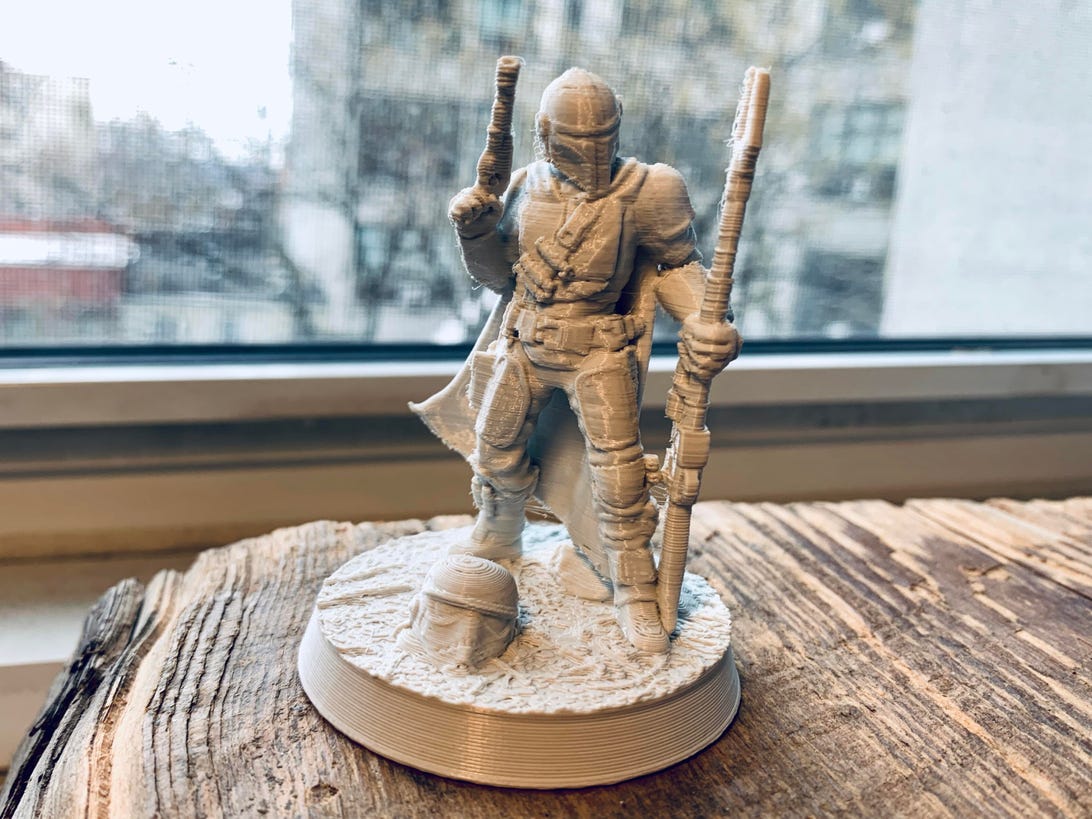
3D printers, which range from affordable (under $300) to high-end (over $3,000), are awesome gifts for a creative person or the 3D printing enthusiast in your life. Even better, they’re great for you to craft your own personalized designs. Also, 3D printing technology is getting better and better, meaning the print quality of whatever it is you’re making is starting to look like it was made by a professional 3D printing service. Like I said, it’s a really cool hobby, and it’s getting easier to find a great 3D printer to facilitate it.
I will note, though, that a cheap 3D printer is still going to cost at least a couple hundred bucks. If even a budget 3D printer is out of your price range, you can still jump on the additive manufacturing trend by grabbing a 3D pen to play with until a desktop 3D printer is within reach.


I’ve taken a deep dive into the best 3D printers available today. I’ve chosen several options for people who want to start printing 3D objects and for those who want to update their existing 3D printing setup with a pro 3D printer. I’ve included both small and large 3D printers on this list and also taken other factors into consideration, such as print speed, the size of the build plate, the cost of PLA filament, the kind of print head included and more. Once you find the best 3D printer and you end up getting completely addicted to additive manufacturing, don’t blame me. I’ve added some of the most common questions I get in the FAQ section below.
Our top pick
Here’s my current pick for the overall best value, considering price, ease of use and reliability.

 \n ","topic":"","ttag":"","variant":"","viewguid":"","event":"listicle|image|1","correlationId":"","_destCat":"https:\/\/shareasale.com\/r.cfm?b=1384498&u=514792&m=90014&urllink=www%2Eanycubic%2Ecom%2Fproducts%2Fanycubic%2Dvyper&afftrack=%5Bsubid%5Fvalue%5D","productName":"Anycubic Vyper","formatType":"IMAGE","location":"LIST","position":1,"sku":"","dwLinkTag":"article-body|listicle|image","selector":"#article-body #listicle-68733d31-2f01-4ce1-9df4-4043dd32d81d .itemImage"}}” rel=”noopener nofollow” target=”_blank”>
\n ","topic":"","ttag":"","variant":"","viewguid":"","event":"listicle|image|1","correlationId":"","_destCat":"https:\/\/shareasale.com\/r.cfm?b=1384498&u=514792&m=90014&urllink=www%2Eanycubic%2Ecom%2Fproducts%2Fanycubic%2Dvyper&afftrack=%5Bsubid%5Fvalue%5D","productName":"Anycubic Vyper","formatType":"IMAGE","location":"LIST","position":1,"sku":"","dwLinkTag":"article-body|listicle|image","selector":"#article-body #listicle-68733d31-2f01-4ce1-9df4-4043dd32d81d .itemImage"}}” rel=”noopener nofollow” target=”_blank”>
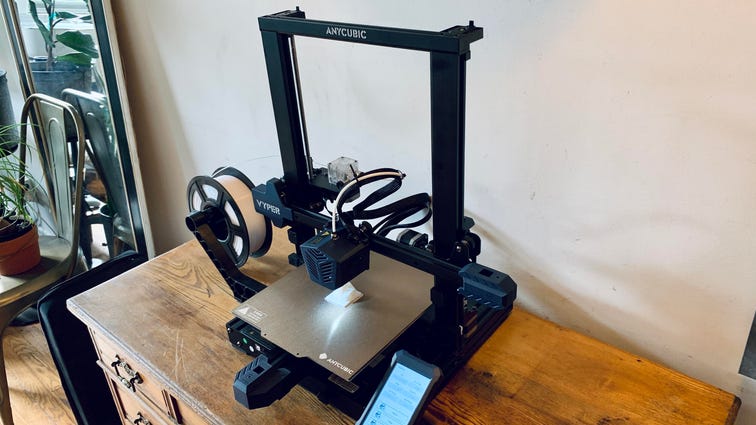

Dan Ackerman/CNET
The new Anycubic Vyper FDM printer attempts to be both an affordable 3D printer and easy to use. It’s a tricky needle to thread. Plenty of 3D printers offer automatic bed leveling and calibration to make sure prints come out even and firmly anchored to the print bed. This, however, is the first time I’ve seen a 3D printer run its bed leveling once, with zero manual input from me, and be totally good to go. I printed a 3D test file from the included SD card within minutes of powering on, and I’ve never seen a first print from a 3D printer come out so perfectly.
Entry-level 3D printers

 \n ","topic":"","ttag":"","variant":"","viewguid":"","event":"listicle|image|2","correlationId":"","_destCat":"https:\/\/www.amazon.com\/Monoprice-Printer-Heated-Calibration-Assembled\/dp\/B07JK7GXRY","productName":"Monoprice Mini Delta V2","formatType":"IMAGE","location":"LIST","position":2,"sku":"","dwLinkTag":"article-body|listicle|image","selector":"#article-body #listicle-07e0f025-bf36-45b8-abd8-2a9f9540101a .itemImage"}}” rel=”noopener nofollow” target=”_blank”>
\n ","topic":"","ttag":"","variant":"","viewguid":"","event":"listicle|image|2","correlationId":"","_destCat":"https:\/\/www.amazon.com\/Monoprice-Printer-Heated-Calibration-Assembled\/dp\/B07JK7GXRY","productName":"Monoprice Mini Delta V2","formatType":"IMAGE","location":"LIST","position":2,"sku":"","dwLinkTag":"article-body|listicle|image","selector":"#article-body #listicle-07e0f025-bf36-45b8-abd8-2a9f9540101a .itemImage"}}” rel=”noopener nofollow” target=”_blank”>
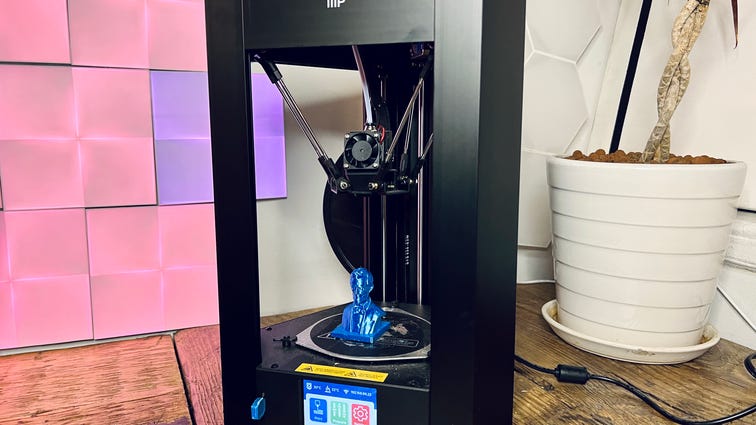

Dan Ackerman/CNET
I had high hopes for this dirt-cheap 3D printer with a tiny footprint. It’s usually under $200 (down to $149 as of right now), and requires no additional assembly. And I do like it, but it’s for a specific audience. This is not the great low-cost entry-level printer I was hoping for. It required some tweaking and troubleshooting to get up and running. The included microSD card was so cheap and corrupted it never worked, the built-in Wi-Fi was never able to get on my network, and the machine’s arms got caught on some poorly installed plastic wire covers (I just ripped the paper-thin covers off).
But once I had all the problems ironed out, it was a reliable little machine for quick jobs. It would make a great second 3D printer, or if you need to fit one into a small space. I especially liked the auto-leveling, which worked well, and the color touchscreen, which is sometimes a feature that gets chopped from low-cost models. If you’re willing to put a little effort into getting it set up correctly, it’s a great printer for the price.

 \n ","topic":"","ttag":"","variant":"","viewguid":"","event":"listicle|image|3","correlationId":"","_destCat":"https:\/\/www.amazon.com\/Monoprice-Select-Mini-Printer-Assembled\/dp\/B01FL49VZE\/","productName":"Monoprice Select Mini V2","formatType":"IMAGE","location":"LIST","position":3,"sku":"","dwLinkTag":"article-body|listicle|image","selector":"#article-body #listicle-78e45160-c67b-418d-b3c3-3bc618c4ed34 .itemImage"}}” rel=”noopener nofollow” target=”_blank”>
\n ","topic":"","ttag":"","variant":"","viewguid":"","event":"listicle|image|3","correlationId":"","_destCat":"https:\/\/www.amazon.com\/Monoprice-Select-Mini-Printer-Assembled\/dp\/B01FL49VZE\/","productName":"Monoprice Select Mini V2","formatType":"IMAGE","location":"LIST","position":3,"sku":"","dwLinkTag":"article-body|listicle|image","selector":"#article-body #listicle-78e45160-c67b-418d-b3c3-3bc618c4ed34 .itemImage"}}” rel=”noopener nofollow” target=”_blank”>
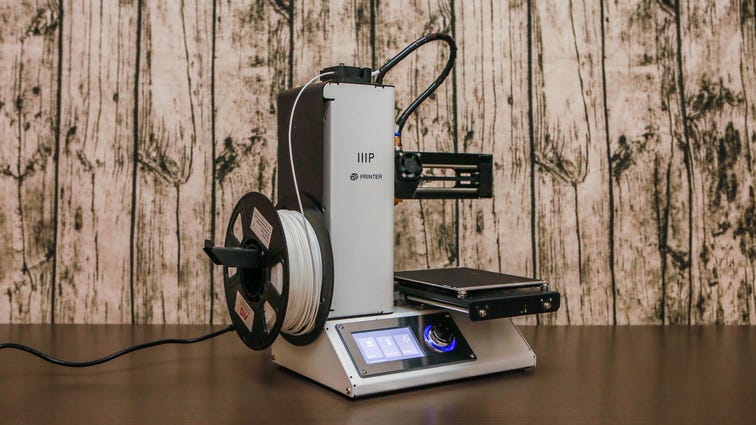

Sarah Tew/CNET
Despite the low price, this is a pretty damn full-featured 3D printer that supports any type of filament including plastic filament. It is my favorite affordable 3D printer first step for testing the 3D printing waters. Print quality and printing speed are excellent, but there will be a good amount of trial and error in your first few prints. Just be sure to purchase extra filament since you’ll use up the included sample roll very quickly.

 \n ","topic":"","ttag":"","variant":"","viewguid":"","event":"listicle|image|4","correlationId":"","_destCat":"https:\/\/www.bestbuy.com\/site\/xyzprinting-da-vinci-jr-1-0a-pro-3d-printer\/6323437.p?skuId=6323437","productName":"XYZPrinting da Vinci Jr. 1.0 A Pro","formatType":"IMAGE","location":"LIST","position":4,"sku":"","dwLinkTag":"article-body|listicle|image","selector":"#article-body #listicle-9115f211-5a02-476e-bb8f-62ce303bff06 .itemImage"}}” rel=”noopener nofollow” target=”_blank”>
\n ","topic":"","ttag":"","variant":"","viewguid":"","event":"listicle|image|4","correlationId":"","_destCat":"https:\/\/www.bestbuy.com\/site\/xyzprinting-da-vinci-jr-1-0a-pro-3d-printer\/6323437.p?skuId=6323437","productName":"XYZPrinting da Vinci Jr. 1.0 A Pro","formatType":"IMAGE","location":"LIST","position":4,"sku":"","dwLinkTag":"article-body|listicle|image","selector":"#article-body #listicle-9115f211-5a02-476e-bb8f-62ce303bff06 .itemImage"}}” rel=”noopener nofollow” target=”_blank”>
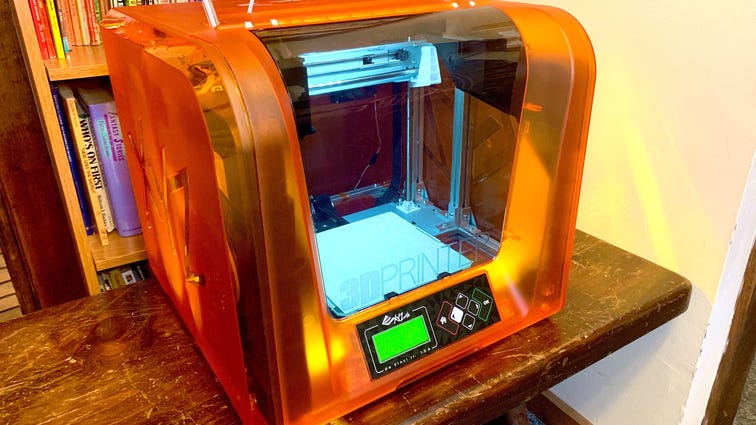

Dan Ackerman/CNET
The ambitious da Vinci Jr. 1.0 A Pro is a step-up printer with a big 6.9-inch square build surface and optional add-ons for both laser engraving and using specialized material like carbon-fiber filament. However, the lack of built-in Wi-Fi is a major hassle, and for this price a nonheated print bed is a serious omission. Some of the company’s printers are locked to proprietary filament, but this model is not (which is good, because the sample roll of PLA filament included in the box wasn’t great).
Despite some extra troubleshooting required during setup, I liked the modular nature of the printer, its big, easy-to-use buttons, and frankly, the cheerful bright orange color. Amazon has a slightly updated version that’s a little cheaper, but alas, in boring old gray.

 \n ","topic":"","ttag":"","variant":"","viewguid":"","event":"listicle|image|5","correlationId":"","_destCat":"https:\/\/www.matterhackers.com\/store\/l\/anycubic-photon-mono-2k-lcd-resin-3d-printer\/sk\/MMST3M7R?aff=7583","productName":"Anycubic Mono","formatType":"IMAGE","location":"LIST","position":5,"sku":"","dwLinkTag":"article-body|listicle|image","selector":"#article-body #listicle-67587b99-35b3-4fe7-959c-5bfcf456482f .itemImage"}}” rel=”noopener nofollow” target=”_blank”>
\n ","topic":"","ttag":"","variant":"","viewguid":"","event":"listicle|image|5","correlationId":"","_destCat":"https:\/\/www.matterhackers.com\/store\/l\/anycubic-photon-mono-2k-lcd-resin-3d-printer\/sk\/MMST3M7R?aff=7583","productName":"Anycubic Mono","formatType":"IMAGE","location":"LIST","position":5,"sku":"","dwLinkTag":"article-body|listicle|image","selector":"#article-body #listicle-67587b99-35b3-4fe7-959c-5bfcf456482f .itemImage"}}” rel=”noopener nofollow” target=”_blank”>
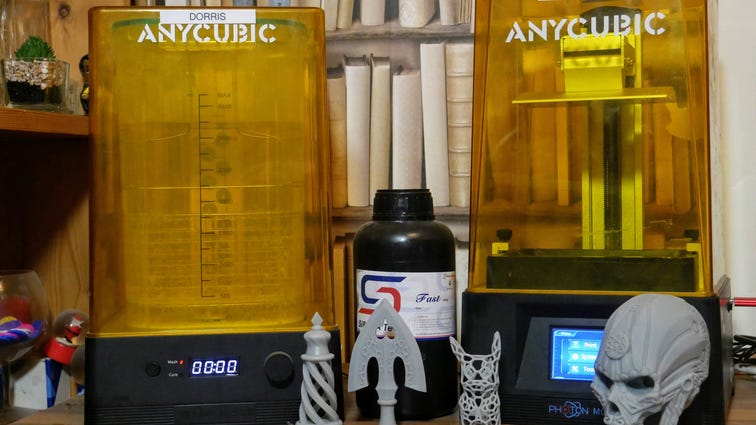

Sarah Tew/CNET
Resin printers are the next step up in rapid prototyping design technology when you want your printing to look as high quality as possible. Just be warned: The liquid resin is harder to work with, and it requires both good ventilation and a portable UV light to properly cue. This model is extremely popular with board game hobbyists who want to print pro-looking miniatures, and sometimes you’ll see it fall in price.
Midrange 3D printers

 \n ","topic":"","ttag":"","variant":"","viewguid":"","event":"listicle|image|6","correlationId":"","_destCat":"https:\/\/www.amazon.com\/dp\/B08R8SLSV7\/","productName":"Anycubic Photon Mono X","formatType":"IMAGE","location":"LIST","position":6,"sku":"","dwLinkTag":"article-body|listicle|image","selector":"#article-body #listicle-7bca484e-dbba-4000-9c33-4e0ec68156d9 .itemImage"}}” rel=”noopener nofollow” target=”_blank”>
\n ","topic":"","ttag":"","variant":"","viewguid":"","event":"listicle|image|6","correlationId":"","_destCat":"https:\/\/www.amazon.com\/dp\/B08R8SLSV7\/","productName":"Anycubic Photon Mono X","formatType":"IMAGE","location":"LIST","position":6,"sku":"","dwLinkTag":"article-body|listicle|image","selector":"#article-body #listicle-7bca484e-dbba-4000-9c33-4e0ec68156d9 .itemImage"}}” rel=”noopener nofollow” target=”_blank”>


Anycubic
Standard resin printers are fine if you want to print small items or miniatures. For more oversized cosplay items, practical models or collections of gaming miniatures, you’re going to need a bigger build area.
Enter the Anycubic Mono X, a resin printer that solves that issue by having a build plate nearly three times bigger than the standard Anycubic models. For example, I managed to print the entire blade of a Dune Crysknife, something that would have needed to be split into three parts if it wasn’t for the extra build volume.
The Mono X also prints at insane speeds. Because resin prints the entire layer in one shot, they tend to be quicker than traditional FDM printers anyway, but the Mono X takes this to the extreme with layers printing in as little as 1 second. It’s incredible to watch. — James Bricknell

 \n ","topic":"","ttag":"","variant":"","viewguid":"","event":"listicle|image|7","correlationId":"","_destCat":"https:\/\/www.amazon.com\/FlashForge-Adventurer-3-3D-Printer\/dp\/B0922HKY36","productName":"Flashforge Adventurer 4","formatType":"IMAGE","location":"LIST","position":7,"sku":"","dwLinkTag":"article-body|listicle|image","selector":"#article-body #listicle-33b254db-a18c-48bd-813c-c053604c8218 .itemImage"}}” rel=”noopener nofollow” target=”_blank”>
\n ","topic":"","ttag":"","variant":"","viewguid":"","event":"listicle|image|7","correlationId":"","_destCat":"https:\/\/www.amazon.com\/FlashForge-Adventurer-3-3D-Printer\/dp\/B0922HKY36","productName":"Flashforge Adventurer 4","formatType":"IMAGE","location":"LIST","position":7,"sku":"","dwLinkTag":"article-body|listicle|image","selector":"#article-body #listicle-33b254db-a18c-48bd-813c-c053604c8218 .itemImage"}}” rel=”noopener nofollow” target=”_blank”>
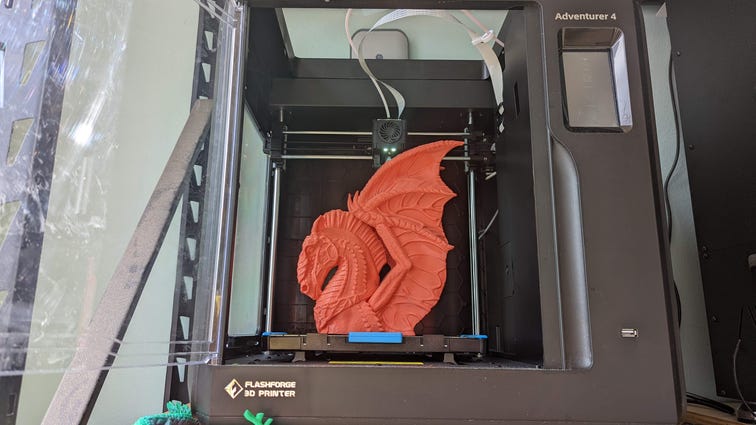

Sarah Tew/CNET
The Flashforge Adventurer 3 has long been one of CNET’s favorite midprice 3D printers. The updated Adventurer 4 brings a handful of iterative improvements that make for a winning evolution. The Adventurer 4 is a fully enclosed unit, which helps control the temperature and block drafts. The build area is 220 by 200 by 250mm, and it has a system for easily swapping out nozzles — all good features to have in a mid/high-end printer.

 \n ","topic":"","ttag":"","variant":"","viewguid":"","event":"listicle|image|8","correlationId":"","_destCat":"https:\/\/www.amazon.com\/SOL-Affordable-Messaging-Technology-Generation\/dp\/B07QRWDVHV","productName":"SOL Desktop Laser 3D Scanner","formatType":"IMAGE","location":"LIST","position":8,"sku":"","dwLinkTag":"article-body|listicle|image","selector":"#article-body #listicle-9f44bf9b-4795-4f80-8458-231c673e56da .itemImage"}}” rel=”noopener nofollow” target=”_blank”>
\n ","topic":"","ttag":"","variant":"","viewguid":"","event":"listicle|image|8","correlationId":"","_destCat":"https:\/\/www.amazon.com\/SOL-Affordable-Messaging-Technology-Generation\/dp\/B07QRWDVHV","productName":"SOL Desktop Laser 3D Scanner","formatType":"IMAGE","location":"LIST","position":8,"sku":"","dwLinkTag":"article-body|listicle|image","selector":"#article-body #listicle-9f44bf9b-4795-4f80-8458-231c673e56da .itemImage"}}” rel=”noopener nofollow” target=”_blank”>


Sarah Tew/CNET
Recreate pretty much anything by putting it on this 3D scanner, where a rotating base and built-in camera create a 360-degree copy, which is then editable in any 3D program and printable on your 3D printer. Simply scan the object, import the scan into your slicing software for cleanup, and print. The included software alerts you of next steps in the printing process with either sound or texts. Scan quality and print resolution are great, and setup is easy, although you might want to clean up your 3D model a bit in a 3D software app after.
High-end and professional 3D printers

 \n ","topic":"","ttag":"","variant":"","viewguid":"","event":"listicle|image|9","correlationId":"","_destCat":"https:\/\/shareasale.com\/r.cfm?b=1613737&u=514792&m=101001&urllink=https%3A%2F%2Fcreality3d%2Eshop%2Fcollections%2F3d%2Dprinter%2Fproducts%2Fcreality3d%2Dcr%2D30%2D3dprintmill%2D3d%2Dprinter&afftrack=","productName":"Creality CR-30","formatType":"IMAGE","location":"LIST","position":9,"sku":"","dwLinkTag":"article-body|listicle|image","selector":"#article-body #listicle-de377db7-c2e5-4f94-88a1-7fce34851a38 .itemImage"}}” rel=”noopener nofollow” target=”_blank”>
\n ","topic":"","ttag":"","variant":"","viewguid":"","event":"listicle|image|9","correlationId":"","_destCat":"https:\/\/shareasale.com\/r.cfm?b=1613737&u=514792&m=101001&urllink=https%3A%2F%2Fcreality3d%2Eshop%2Fcollections%2F3d%2Dprinter%2Fproducts%2Fcreality3d%2Dcr%2D30%2D3dprintmill%2D3d%2Dprinter&afftrack=","productName":"Creality CR-30","formatType":"IMAGE","location":"LIST","position":9,"sku":"","dwLinkTag":"article-body|listicle|image","selector":"#article-body #listicle-de377db7-c2e5-4f94-88a1-7fce34851a38 .itemImage"}}” rel=”noopener nofollow” target=”_blank”>
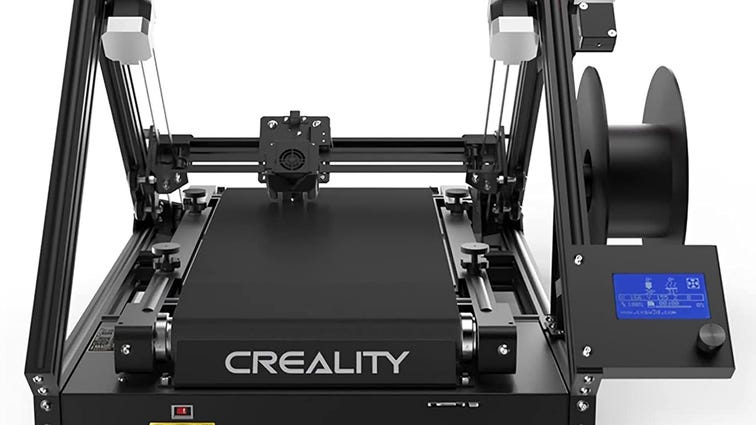

Creality
A word of warning; the CR-30 is not for the beginners out there. It is a complicated machine, and you will need some previous 3D printing knowledge to really get the hang of it. It’s also a very different beast, and instead of printing on a static-sized build plate, it uses a conveyor belt to create an “endless Z-axis.” That lets you print very long things or lots of things over and over again.
If you are a cosplayer looking to make weapons or large armor pieces, the CR-30 gives you a lot of room to create. I’ve managed to print Squall’s Gunblade from Final Fantasy VIII as well as the Whisper of the Worm from Destiny 2 (both were printed in 2 halves and attached together). It’s great for small businesses looking to mass-produce small parts, and with just two CR-30s you could create a small empire on Etsy or Shopify. — James Bricknell

 \n ","topic":"","ttag":"","variant":"","viewguid":"","event":"listicle|image|10","correlationId":"","_destCat":"https:\/\/glowforge.com\/order","productName":"Glowforge 3D Laser Printer","formatType":"IMAGE","location":"LIST","position":10,"sku":"","dwLinkTag":"article-body|listicle|image","selector":"#article-body #listicle-1625b778-04e6-4c07-a9b5-626bf2659731 .itemImage"}}” rel=”noopener nofollow” target=”_blank”>
\n ","topic":"","ttag":"","variant":"","viewguid":"","event":"listicle|image|10","correlationId":"","_destCat":"https:\/\/glowforge.com\/order","productName":"Glowforge 3D Laser Printer","formatType":"IMAGE","location":"LIST","position":10,"sku":"","dwLinkTag":"article-body|listicle|image","selector":"#article-body #listicle-1625b778-04e6-4c07-a9b5-626bf2659731 .itemImage"}}” rel=”noopener nofollow” target=”_blank”>
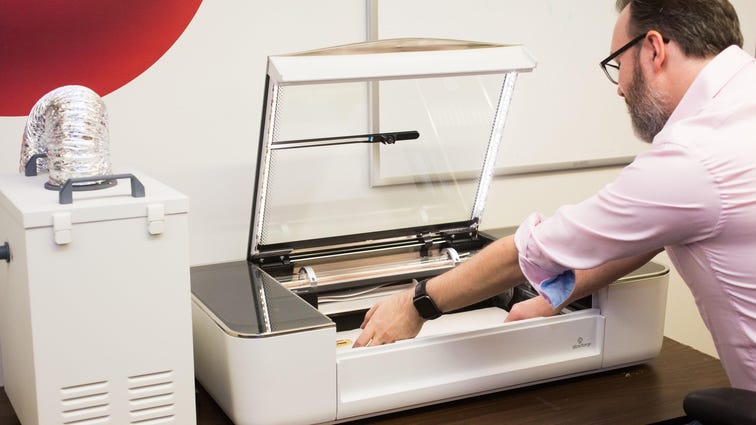

Sarah Tew/CNET
I can’t begin to tell you how much I love the Glowforge professional 3D printer. Laser cutters can sculpt projects from wood, leather, lucite and other materials, making it an interesting creation alternative to filament-based 3D printers. Even better, what would take a 3D printer hours to do takes just minutes in the Glowforge.
With it, I’ve created laser-etched LED lights, birch wood tool caddies, and even a three-tier box for my Nespresso sleeves. There’s a robust community of makers creating and sharing files, but pretty much any line drawing you can create in something like Adobe Illustrator can be turned into a project.
The software is all cloud-based, which adds a layer of complication (you need internet service to use it), but the ability to create amazing gifts and more from simple 0.125-inch or 0.25-inch cheap plywood is pretty empowering.

 \n ","topic":"","ttag":"","variant":"","viewguid":"","event":"listicle|image|11","correlationId":"","_destCat":"https:\/\/www.dynamism.com\/bcn3d\/bcn3d-sigma-d25.html","productName":"BCN3D Sigma D25","formatType":"IMAGE","location":"LIST","position":11,"sku":"","dwLinkTag":"article-body|listicle|image","selector":"#article-body #listicle-32dc45ee-25ee-4f52-8b7a-c484ae40c3ca .itemImage"}}” rel=”noopener nofollow” target=”_blank”>
\n ","topic":"","ttag":"","variant":"","viewguid":"","event":"listicle|image|11","correlationId":"","_destCat":"https:\/\/www.dynamism.com\/bcn3d\/bcn3d-sigma-d25.html","productName":"BCN3D Sigma D25","formatType":"IMAGE","location":"LIST","position":11,"sku":"","dwLinkTag":"article-body|listicle|image","selector":"#article-body #listicle-32dc45ee-25ee-4f52-8b7a-c484ae40c3ca .itemImage"}}” rel=”noopener nofollow” target=”_blank”>
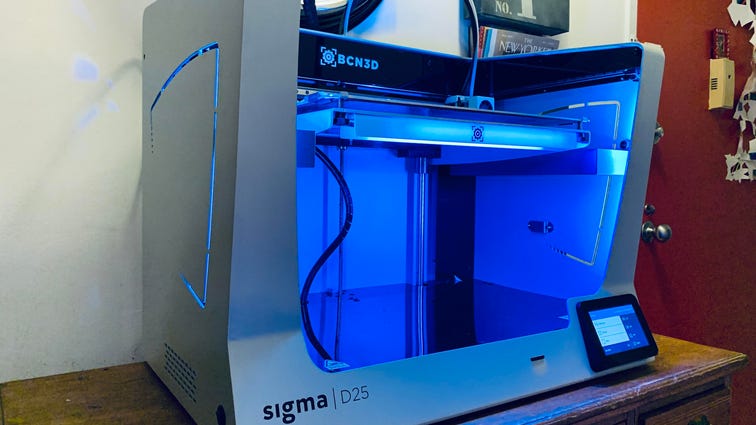

Dan Ackerman/CNET
A smaller, desktop-sized version of its more industrial large-format 3D printers, this recent model from BCN is a dual extruder printer, which means it can use two different spools of material at once.
That lets you either 3D print two copies of something at the same time, or use two different colors of material to create a multicolored 3D object. The build volume is also huge, at least compared to the simpler models listed above, at 420 by 300 by 200mm.
The build quality, menu system and bundled custom version of Cura (a 3D slicing software) are all excellent. But the instructions and documentation, at least in English, are thin, and the setup is nowhere near as plug-and-play as some of the simpler printers on this list.
Printing is fast and the built-in settings option goes far beyond what normal consumer printers offer. The automated calibration tools are also much more precise than other printers I’ve tested. You can go far beyond the standard 1.75mm PLA filament most consumer 3D printers use, and it’s set up out of the box for 3mm filament of various materials.
Note this leans more towards the industrial side than the consumer side, but if you need bigger volume, more speed or an easy easy way to create multimaterial or multicolor objects, it’s something that could easily fit in your workshop, maker’s lab or garage.
3D printing FAQs
What material should I use to print with?
Most home 3D printers use PLA or ABS plastic. Professional printers can use all sorts of materials, from metal to organic filament. Some printers use a liquid resin, which is much more difficult to handle. As a beginner, use PLA. It’s nontoxic, made mostly of cornstarch and sugarcane, handles easily and is inexpensive. However, it’s more sensitive to heat, so don’t leave your 3D prints on the dashboard of a car on a hot day.
Which brand of PLA is best?
Generally speaking, Hatchbox has never let me down, and runs about $23 for a full 1kg spool on Amazon. Some of the printers I tested only accommodate narrower 0.5kg spools. In those cases, I sometimes used a larger Hatchbox roll with a separate spool-holder. Other times, I had good luck with AIO Robotics 0.5kg spools, which are a little more expensive, at $14 for 0.5kg. Amazon Basics and Monoprice can also be good, but for any brand, weird colors like metallic or glow-in-the-dark filament can be hit or miss. Note that a 1kg roll prints a lot of stuff.
What settings should I use?
Most 3D printers include or link to recommended software, which can handle converting 3D STL or other files into formats supported by the printer. Stick with the suggested presets to start, with one exception. I’ve started adding a raft, or bottom layer of filament, to nearly everything I print. It has cut down dramatically on prints that don’t adhere to the bed properly, which is a common issue. If you continue to have problems, rub a standard glue stick on the print bed right before printing.
What are supports?
Your 3D models probably need some help to print properly, as these printers don’t do well with big overhangs — for example, an arm sticking out from a figure. Your 3D printer software can usually automatically calculate and add supports, meaning little stands that hold up all those sticking-out parts of the model. After the print is done, clip the supports off with micro cutters and file down any nubs or rough edges with hobby files.
Where do I find things to print?
Thingiverse.com is a huge online repository of 3D files for anything and everything you can think of. Pokemon chess set? It’s there. Dyson vacuum wall mount? You bet.
When you’re ready to create your own designs, there are a ton of software packages to choose from, but it’s easiest to start with the browser-based free TinkerCad app from Autodesk.

